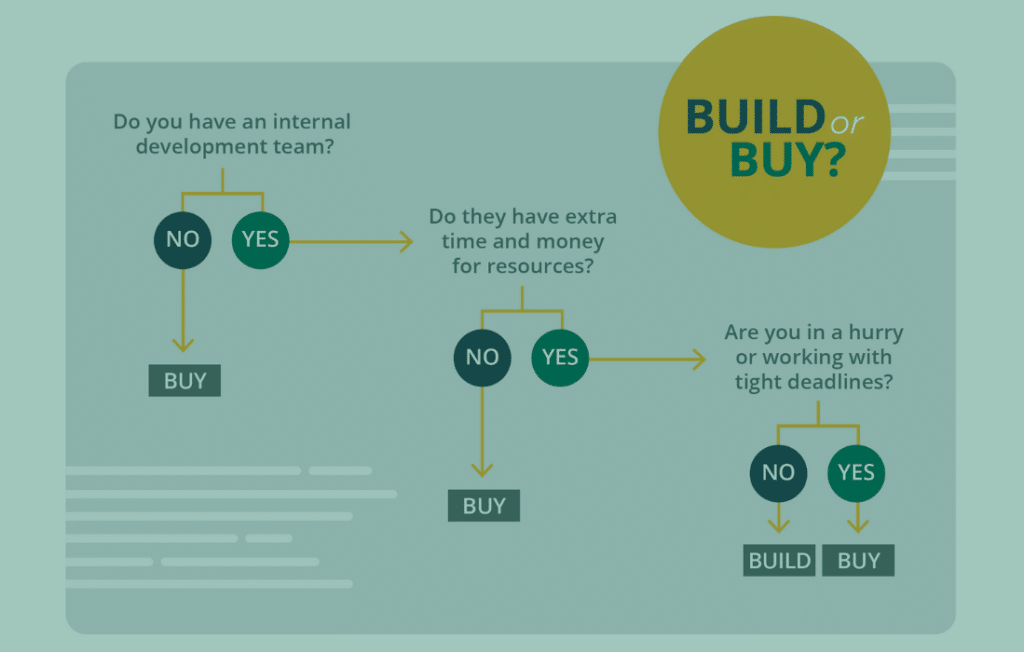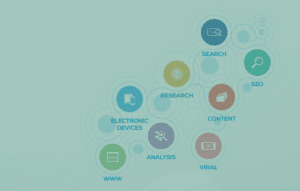You’re building a new product and are looking for the best data source. Or maybe you need a better API for your current application or service. You have three options — build your own API, use a free public API, or pay for a third-party API. Your use case will likely dictate which option you choose, but to help you decide we’ve broken down all the pros and cons of each API approach — starting with building your own.
Building an API: Pros & Cons
Organizations usually build their own API when they have the in-house expertise and don’t think they’ll find the customization they need from an external source. However, the investment can quickly become overwhelming if you don’t have a plan and think through the long-term impact. Here are the pros and cons of building an API.
Pros of Building Your Own API:
- Customization: By building your own API, you have complete control over its functionality and features. This allows you to tailor it to the specific needs of your business or application.
- Integration: You can build your own API to integrate with other parts of your application or software stack seamlessly.
- Scalability: With a custom API, you can ensure that it scales with your business needs and can handle increased traffic or usage over time.
- Security: Building your own API allows you to implement security measures specific to your business needs and data.
Cons of Building Your Own API:
- Cost: Building and maintaining an API requires significant time and resources, which can be expensive.
- Expertise: Building an API requires expertise in software development, web services, and other related fields. If you or your team lacks these skills, you may need to hire additional staff or outsource the work.
- Time to market: Building an API can take a significant amount of time, which may delay the launch of your application or service.
- Maintenance: Once your API is up and running, it will require ongoing maintenance and updates to ensure it stays secure and performs optimally, which can take away from other important activities.
Using a Public API: Pros & Cons
Public APIs allow developers to access data and functionality from other applications without having to build it themselves — for free. Public APIs can certainly be beneficial, but because they’re free, there are usually some serious implications for using them. Here are the pros and cons of using a public API:
Pros of Using a Public API
- Speed: Public APIs are typically easily accessible –– perfect if you only need an API for a one-off purpose. And this can be a major advantage for start-up businesses that are looking to quickly launch new products or features, but without the cost.
- Flexibility: While a public API may not be flexible in terms of features and functionality, it can be great if you’re looking to test the water with a particular API before you want to make the full investment of building or buying a better option.
- Cost savings: Using a public API saves you money as you won’t have to pay for the development and maintenance of an API. This can be a significant cost saving if you’re on a tight budget.
Cons of Using a Public API
- Security risks: Public APIs can be a security risk, as they provide access to data and functionality that could be used to harm businesses or their customers. If you’re a large business, it’s unlikely that a public API will adhere to your privacy standards.
- Reliability: Public APIs can be unreliable with outages or other disruptions. Often they’re not designed for long-term use and whoever developed them may no longer be maintaining them. This can be a major problem if you plan to rely on a public API to power your product or service.
- Performance issues: Public APIs can suffer from performance issues, such as slow response times or downtime if they don’t have a dedicated team in place to help with support. This can have a significant impact on your user experience and the overall performance of your application.
- Limited control: Using a public API, you’ll have to work with the underlying infrastructure and recognize you won’t be able to customize it. This could also cause more challenges during the integration process.
Evaluating Your Tech Stack – API Edition
Using a Third-Party API: Pros & Cons
Unlike public APIs, third-party APIs are APIs as a product and are provided by companies and organizations for a cost.
The prevalence of APIs as a product has increased due to the demand for support when it comes to API development and maintenance. Data providers specializing in APIs have more expertise in developing APIs since it’s their core business. As a result, third-party APIs offer many advantages, but there are also some downsides to consider.
Pros of Using a Third-Party API:
- Time savings: Using an existing API saves time by allowing developers to reuse resources, rather than building everything from scratch. Developers can focus on the core functionality of their application or service instead of working on maintaining parsers and proxy networks.
- Scalability: Third-party APIs provide access to large datasets that would be difficult, if not impossible, to collect on your own. This data can include anything from SERP results to product prices to reviews and more. And since the API is built as a product, it’s usually able to withstand large volumes of requests.
- Easy integration: Since third-party APIs are being sold as a product, they have to be able to integrate with a variety of data ecosystems. This can be highly beneficial if you’re working with multiple environments.
- Better user experience: Third-party APIs can help provide a better user experience by allowing developers to spend less time on the maintenance of the API and more time on creating additional features and content in their applications – which makes their applications more valuable and engaging to users.
Cons of Using a Third-Party API:
- Security risks: Similar to public APIs, not all third-party APIs are built ethically. Some can pose a security risk to both the provider and the user. However, most third-party providers know this is important if they want to be able to charge for their API, so they typically encrypt requests and take other security measures to protect you and your data.
- Dependency on third parties: Using an existing API means you depend on a third party to provide the service. If the provider goes out of business or decides to change the terms of their API, this could have a significant impact on your application and business.
- Limited control: Like public APIs, using a third-party API you have limited control over the underlying infrastructure. This means that you may not be able to customize the API to meet your specific needs, and you may be limited in terms of the functionality you can provide to your users.
Ultimately, the decision to build an API will depend on your business needs, budget, and resources. If you have a skilled development team who have additional time to commit towards this effort – then you should go for it. However, if you lack the necessary expertise, time, or resources, it may be more cost-effective to use a third-party API provider.
If you find the task of building your own API too demanding or your current solution isn’t cutting it, we can help. We understand how it feels to be burdened by the expensive, time-consuming process of building your API – or to be left with a public API that’s underperforming when it comes to your needs. We recognize this is a challenging process for businesses to undertake. That’s why we continue to expand and enhance our collection of reliable, robust, real-time APIs.


